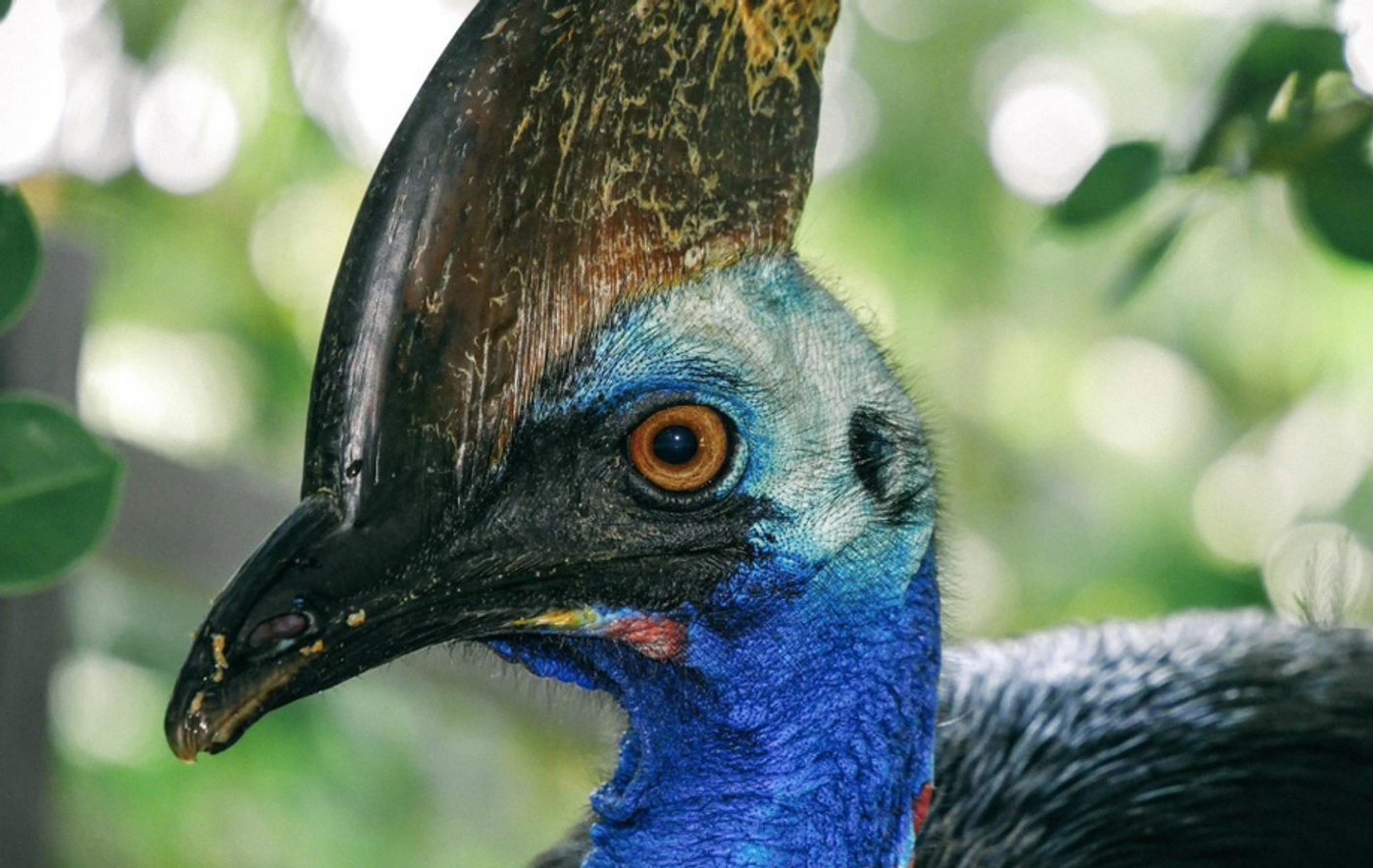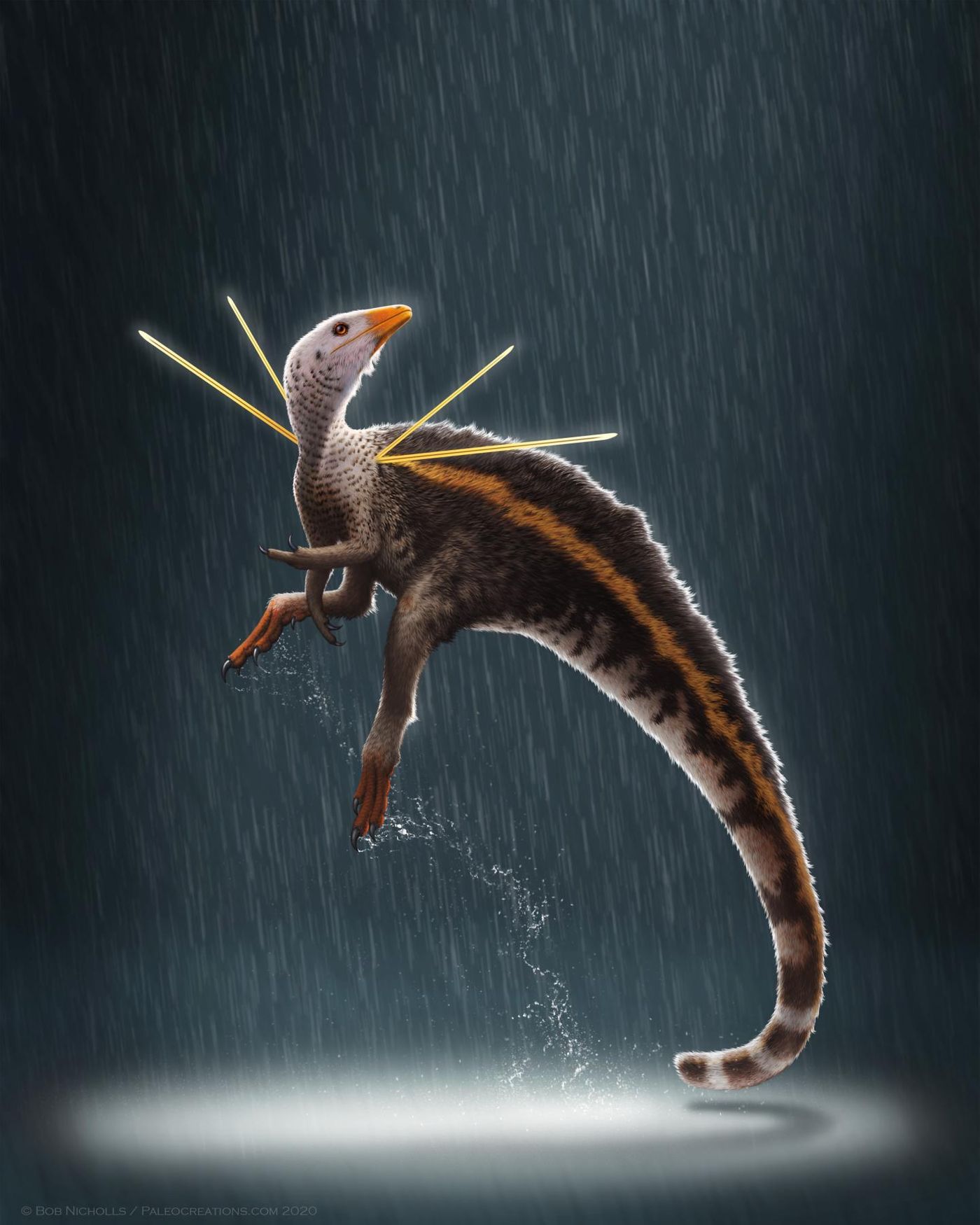Unique Plumage Found on a Dinosaur Fossil
Many species of birds display spectacular patterns and colors in their feathers. Now scientists have found that these features may have a connection to a recently identified dinosaur, which is thought to be the most elaborate one ever found. This new dinosaur species is called Ubirajara jubatus. It was about the size of a chicken and had a long mane down its back. Impressively, it had ribbons extending out and back away from its shoulders, which may have been used to intimidate foes or attract mates. The findings, which have been reported in Cretaceous Research, are the first such feature ever found in the fossil record.
"What is especially unusual about the beast is the presence of two very long, probably stiff ribbons on either side of its shoulders that were probably used for display, for mate attraction, inter-male rivalry or to frighten off foe," said the study co-leader, Professor David Martill of the University of Portsmouth.
"We cannot prove that the specimen is a male, but given the disparity between male and female birds, it appears likely the specimen was a male, and young, too, which is surprising given most complex display abilities are reserved for mature adult males. Given its flamboyance, we can imagine that the dinosaur may have indulged in elaborate dancing to show off its display structures."
These ribbons are not thought to be fur, scales, or what we think of as feathers, but are more likely to be unique to this animal, suggested the researchers.
"These are such extravagant features for such a small animal and not at all what we would predict if we only had the skeleton preserved. Why adorn yourself in a way that makes you more obvious to both your prey and to potential predators? The truth is that for many animals, evolutionary success is about more than just surviving, you also have to look good if you want to pass your genes on to the next generation," said study co-author and researcher Robert Smyth of the University of Portsmouth.
"Modern birds are famed for their elaborate plumage and displays that are used to attract mates - the peacock's tail and male birds-of-paradise are textbook examples of this. Ubirajara shows us that this tendency to show off is not a uniquely avian characteristic, but something that birds inherited from their dinosaur ancestors."
Professor Dino Frey of the State Museum of Natural History in Karlsruhe, Germany discovered the species while examining fossils.
Ubirajara jubatus lived during the Aptian stage of the Cretaceous period, which was around 120 million years ago. It may have been able to raise or lower its mane with muscles when it needed to make a display, like a dog raising its hackles, for example. The ribbons and mane were nearly intact in the fossil, which also had fur-like filaments on its 'hands.' The shoulder ribbons were long and flat, and feature a sharp ridge down the middle.
"We know lots of dinosaurs had bony crests, spines, and frills that were probably used for display but we don't see these very often in living birds. In birds, crests are made of feathers," said Smyth.
"This little dinosaur provides some insight into why this might be the case. Bone requires a lot of energy for a body to grow and maintain, it's also heavy and can cause serious injury if broken." Keratin doesn't require as much energy to generate as bone, noted Smyth.
This dinosaur is the first avian specimen to be found in the Crato Formation, a shallow inland sea in the area of Brazil about 110 million years ago, and is the first to be found from the ancient supercontinent of Gondwana with its skin intact.
"The Ubirajara jubatus is not only important because of the integumentary structures present for the first time in a non-avian dinosaur, completely changing the way of seeing the behavior of certain dinosaurs. Rather, the scientific value transcends, forming a watershed, since it is the first evidence for this group in Latin America, as well as one of the few reported for the subcontinent of Gondwana, expanding the knowledge about non-avian feathered dinosaurs for America, whose evidence is very scarce," added researcher Hector Rivera Sylva, of Museo del Desierto, Mexico.
Sources: AAAS/Eurekalert! via University of Portsmouth, Cretaceous Research










